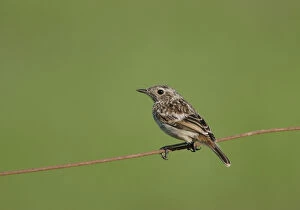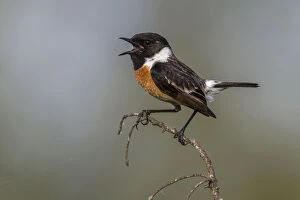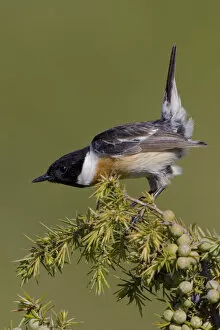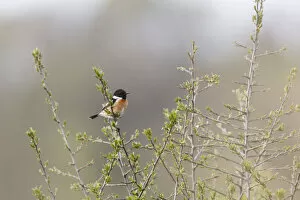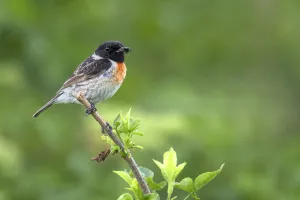European Stonechat Collection
The European Stonechat (Saxicola rubicola) is a fascinating bird species that can be found in various habitats across Europe
All Professionally Made to Order for Quick Shipping
The European Stonechat (Saxicola rubicola) is a fascinating bird species that can be found in various habitats across Europe. With its distinct appearance and behavior, it has captured the attention of bird enthusiasts and researchers alike. These captivating creatures are known for their vibrant plumage, with males sporting a striking combination of black, orange, and white feathers. The females have more subdued colors but still possess an elegant charm. Their small size adds to their appeal, making them a delightful sight to behold. One remarkable aspect of the European Stonechat's natural history is its habitat preference and can be found in diverse environments such as open grasslands, heathlands, coastal areas, and even agricultural fields. This adaptability allows them to thrive in different regions across Europe. Observing these birds in their natural habitat provides valuable insights into their behavior. Picture No. 11992185 showcases a male European Stonechat perched on an unidentified shrub in Ooipolder, Gelderland, the Netherlands – a moment frozen in time that captures the essence of this species' resilience. Picture No. 11992183 depicts another intriguing scene – a European Stonechat perched on a branch with a spider clutched firmly in its beak. This image highlights their insectivorous diet and demonstrates their resourcefulness when it comes to finding food. Even as juveniles, European Stonechats exhibit distinctive characteristics that set them apart from other birds. Picture No. 11992184 shows one such juvenile perched on wire – displaying hints of adult plumage while still retaining some youthful features. Interestingly enough, these birds are not limited to daytime activities alone; they also engage in nocturnal behaviors as shown by Picture No. 11992182 featuring an enchanting shot of an individual at nightfall - highlighting yet another facet of this species' versatility. While primarily associated with Europe due to its name, the they are also be found in other regions, as seen in Picture No.



